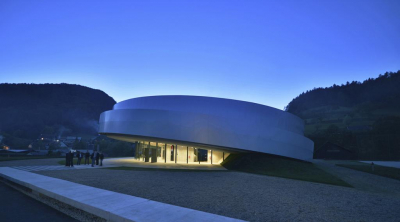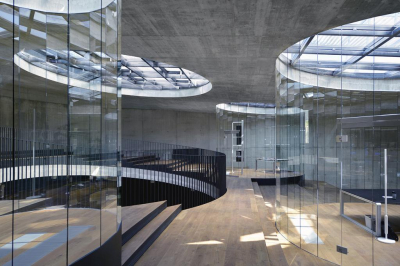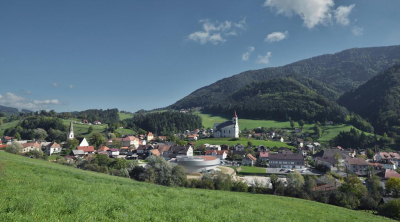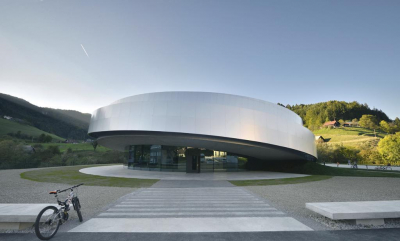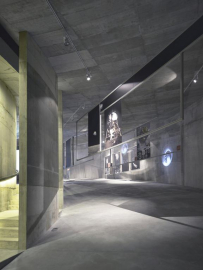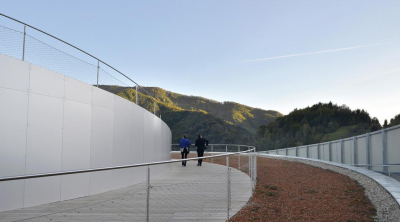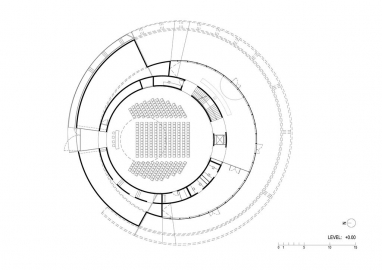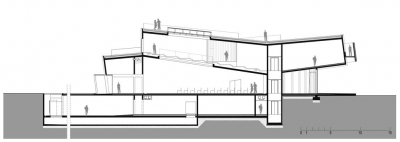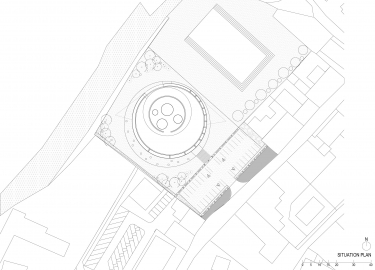The Cultural Centre of European Space Technologies (KSEVT), Space Habitable Wheel
Cultural Center of EU Space Technologies (KSEVT) Space Habitable Wheel
The Cultural Center of European Space Technologies (KSEVT) will substantially supplement and emphasize the local cultural and social activities of the former Community Center in Vitanje, the town in Slovenia that was family home to Herman Potocnik Noordung, the first theoretician of space. The program includes additional cultural (exhibitions, events) and scientific activities (research, conferences) strongly connected to the phenomena of culturalisation of the space. The building features a series of interlocking rings that lie on top of each other to create a continuous ramped structure.
The concept design for the building of the KSEVT derives from the habitation wheel of the first geostationary space station described in Noordung s 1929 book titled The Problem of Space Travel - The Rocket Motor. The main exhibition space circularly wraps the main round hall, which connects with the research spaces above through the round opening between the two spaces. It creates interaction between the program of local community and the scientific program of KSEVT.
The building exceeds the size of the generic houses of Vitanje. With its volumetric and dynamic presence builds the relation with the main church that sits on a little hill in the middle of the town. In this way symbolically represents the Science & Culture counterpart to the Religion & Church.
Noordnung s space station was designed as a geostationary satellite out of three parts: a solar power station, an observatory and a habitable wheel. After several decades of ponderings on the habitation of space, this idea remains to be the most revolutionary, yet not realized. The rotating habitable wheel, a circular construction setting up artificial gravity with the centrifugal force, is the best and at the same time a simple solution for long-term human habitation of weightlessness. Since we are not accustomed to that kind of condition, it exerts negative influence upon our body in the long run. A station in this orbit could also represent a perfect point of departure for longer spaceflights, considering that the Earth s force of attraction is still the greatest obstacle for that.
The design integrates two buildings in one: a local community centre with a circular multipurpose hall and local library and the museum of Space technologies with its exhibition and research areas. KSEVT will have a public significance and generate social, cultural, and scientific activities, with exhibitions, conferences and study activities

